Sedum ternatum
A creeping succulent growing in rocky habitats
Sedum ternatum woodland stonecrop
This native perennial wildflower is common on damp rocky banks, often growing over stones. Its roots, however, do need some soil and the plant does not entirely grow from rocks or stones. It is a member of the stonecrop family. This species is found throughout eastern and central United States.
The plant produces three horizontal branches at its base that lie across the ground, but sometimes send up erect sprouts. These smooth, green and creeping and spreading stems can also form roots at their nodes. The plant may also spread when pieces of stem break off from the “mother” stem. This species may form dense mats where conditions are good. When many plants are crowded together the three radiating stems may not be as obvious. The stems bear small, fleshy oval-shaped toothless leaves in whorls of three or rarely alternate, with ten to twenty five ⅖ inch white flowers. The blossoms have 4 narrow, pointed petals and shorter green sepals. The brownish anthers are most prominent. Various kinds of small bees serve as pollinators. The plant may also produce sterile branches without flowers.
The woodland stonecrop blooms from April through June with individual plants bearing flowers for about a month. It tends to grow where it can receive sunlight all season long, but can tolerate partial shade. Normally it grows in or near woods. It has been successfully cultivated as a ground cover plant or for rock gardens. It is tolerant of drought and is not generally eaten by deer or rabbits. All parts of the plant are mildly toxic if eaten. Although it is reported that some people consume the leaves either raw or cooked, it is probably best avoided.
Habitat & Range
Occasional in rocky banks, cliffs, and woods. Prefers full sun or partial shade and well-drained soil.
Mostly present in western and central parts of the state.
Range: Found throughout eastern and central United States, but only in the mountains of the far southern states.
| EMP: | FACU |
|---|---|
| NCNE: | FACU |
Phenology
Flowers end of April to early June. Blooming time is about a month.
Characteristics
Inflorescence terminal cyme with 2 to 4 flower branches; 10-25 flowers per cyme
Flowers 4-merous; 4 narrow white petals, 4 smaller light green sepals, 4 erect or ascending white pistils; 8 stamens with silvery anthers that turn reddish-brown to almost black at maturity; abt ½" across
Leaves fleshy, succulent, obovate, bright to medium green; in whorls of and 3 forming a rosette at ends of sterile shoots, rarely alternate; margins entire; abt ½ to 1″ long
Stems creeping and rooting at nodes; light green, smooth or with fine hairs; may become woody at base with age
Root system fibrous
Fruit cluster of follicles; each follicle up to 6mm long
Height 2-6 inches
Plant Codes
S-rank: No Rank
G-rank: G5 (Secure)
Ecology
Pollinated by small bees and butterfiles.
Its mat-forming growth serves as shelter for small invertebrates and insects.
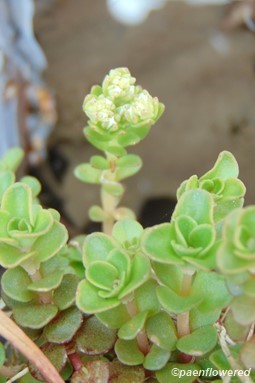
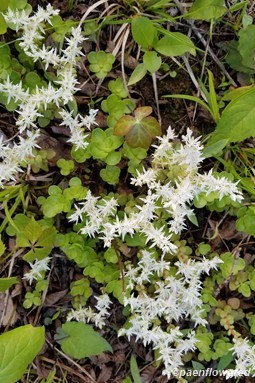
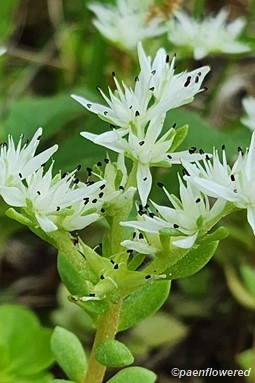
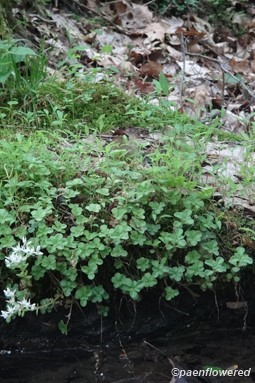
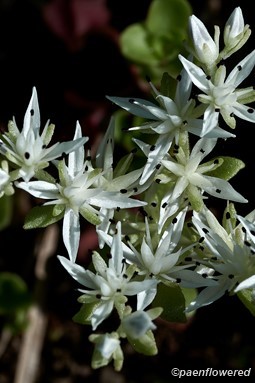
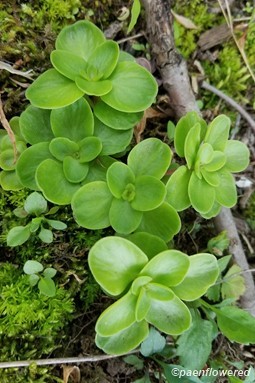
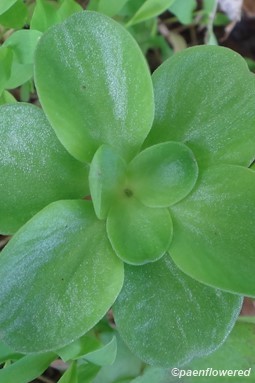
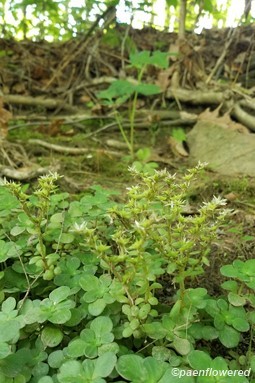


Comments
Have you spotted this plant in your area? We'd love to hear about your experience! Share your comments or questions about the plant below. Comments are moderated before posting.